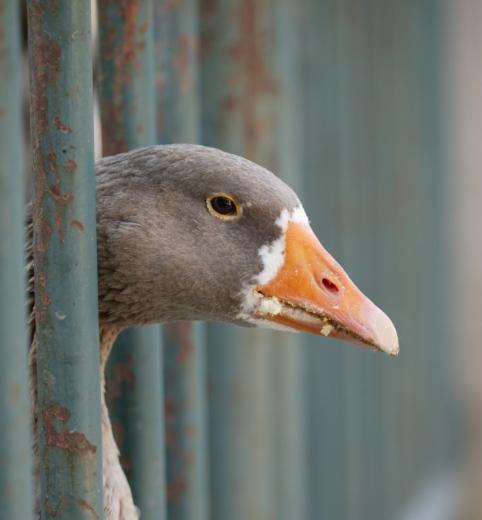Chinese health authorities have reported four more H7N9 infections in three different areas of eastern China over the past 3 days, including the first detection in Shanghai since last April.
Also, animal health officials in China have reported more positive H7N9 findings in environmental samples from a live poultry market, supporting the suspicion that such markets are fueling the outbreak in humans.
The patient from Shanghai is an 86-year-old man whose H7N9 illness was confirmed Jan 3, according to a statement yesterday from Hong Kong’s Centre for Health Protection (CHP). Few details about his illness were available in official and media reports, other than that he is hospitalized.
Meanwhile, a 34-year-old woman from Zhejiang province is hospitalized in critical condition with an H7N9 infection, according to a separate CHP statement. Her symptoms began on Dec 29 and she was hospitalized on Jan 2; the virus was confirmed in her respiratory samples 2 days later. She is in critical condition.
The woman is from the city of Zhuji, and her illness is the first H7N9 case reported in Zhejiang province this year, Xinhua, China’s state news agency, reported yesterday. In the middle of December the province reported two cases, in a 57-year-old man and his 30-year-old son-in-law.
More Guangdong cases
The other two cases are both in southern China’s Guangdong province, where most of China’s most recent cases were detected. The CHP said today that one of the patients is a 47-year-old man who is a poultry worker from Foshan and became ill on Dec 25. He was hospitalized in Guangzhou on Jan 3 and is in critical condition. Provincial health officials are monitoring 60 of the man’s close contacts, but no far no other H7N9 infections have been detected.
Guangdong province’s other new case involves a 71-year-old man from Yangjiang who got sick on Jan 1 and was admitted to a hospital on Jan 4 where he is in critical condition, according to the CHP. He had no history of recent contact with poultry. Authorities have 65 of his close contacts under medical surveillance, but so far no other cases have been found.
In a related development, the World Health Organization (WHO) today confirmed two earlier reported H7N9 infections in Guangdong province.
One of them is in a 62-year-old man with a history of exposure to live poultry who started having symptoms on Dec 11, was admitted to a hospital on Dec 16, and remains in critical condition. The other patient is a 38-year-old man who got sick on Dec 9 and was hospitalized on Dec 18, according to the WHO. He is still in critical condition.
The four new cases push the number of H7N9 cases on China’s mainland to 148, according to the CHP. Additionally, four cases with ties to the mainland have been reported elsewhere—two in Hong Kong and two in Taiwan.
The WHO also acknowledged the previously reported Dec 26 death of an 80-year-old man who had the second of two imported H7N9 cases recently reported in Hong Kong. Both of Hong Kong’s patients had been in the nearby mainland city of Shenzhen, in Guangdong province, before their infections were detected.
The US Centers for Disease Control and Prevention (CDC) said in a Dec 20 risk assessment update that the pace of H7N9 detections started increasing in early October along with the arrival of cooler weather in China and that the cases aren’t unexpected. It noted that some of the patients had contact with poultry and lived in areas where the virus had been detected earlier.
H7N9 illnesses are still showing a sporadic pattern and there is no sign of sustained human-to-human transmission, the CDC said.
Poultry market positives
In other developments, authorities in Guangdong province announced that environmental samples from a wet market in Zengcheng, a suburb of Guangzhou, tested positive for the H7N9 virus, according to a translation of a Xinhua report provided by Flu in China.
The samples that tested positive were two from a goose cage and one sewage water sample. Flu in China is a Web-based information network of flu researchers, public health professionals, and other experts based in and outside of China.
Guangdong province reported its first H7N9 poultry market positive samples in May, well before it reported its first human case. The new H7N9 detections in a poultry market follow virus detections in a Shenzhen market in December during the investigation of the two imported human H7N9 infections that occurred in Hong Kong.
The H7N9 detections in Shenzhen prompted temporary market closures to curb the spread of the virus in one of the city’s districts. In December, Shanghai announced it would temporarily close live poultry markets on Jan 31, the first day of the Lunar New Year, to prevent the spread of H7N9, according to earlier reports.
See also:
Jan 6 CHP statement on Guangdong cases
Jan 5 CHP statement on Zhejiang province case
Jan 5 Xinhua story
Jan 4 CHP statement on Shanghai case
Jan 6 WHO statement
Dec 20 CDC H7N9 background
Jan 5 Flu in China blog post



















